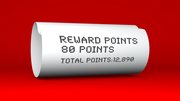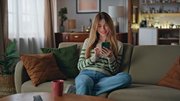Article
How to design your own solar-powered QR codes
A step-by-step on how to pull off your version of Emart's innovative marketing campaign.

June 8, 2012
Korean discount retailer Emart used a solar powered 3-D QR code last week to drive sales during what had once been the slowest sales hour of its day. The code only worked between noon and 1 p.m., due to the unique locations of its shadows during that period. Consumers who scanned during that hour were directed to a specific website with special offers, where they could purchase items via smartphone and have them delivered to their homes. The campaign led to a 25-percent increase in sales during the noon hour.
But how easily can it be replicated, and more importantly, is it even worth replicating?
Doug Stephens, AKA the Retail Prophet, admits the sun-dependent QR codes are creative, but wonders if installations like this will cease to be sustainable traffic drivers once the novelty wears off.
"If the retailers simply posted a sign communicating a special one-hour offer or sale, we wouldn't consider it game-changing," he said. "It certainly wouldn't drive any unique or unprecedented consumer behaviors. In this case, they're essentially doing the same thing as putting up a sign — only using a QR code, so similarly, I don't see this as really moving the needle in a meaningful way. It's a gimmick, and gimmicks rarely engage consumers for very long."
That said, it's highly likely that at least the first few U.S. retailers who do something similar could be successful, according to Jason Holden of Zodiac Creative, a digital agency near Dallas. After all, QR codes only work if you get shoppers to scan them, and this is a great call to action.
"The best thing about the piece, in our opinion, is how the experience is very exclusive to passersby, who look at just the right time," he said. "Since the code works only during certain times, people who pass by the sign at 11:50 a.m. will be motivated to wait a few minutes to understand it — to be included in the 'inside joke,' so to speak."
What's also interesting is that a solar-powered campaign isn't expensive or difficult to implement, said Bryant Smith of Bryant Smith Design Group.
"A QR code is made up of two colors: Black and white," he said. "So for all the white areas of their QR code, they have white pegs that stick out. These white areas will not change because of the shadow."
To pull off the solar-powered campaign, he recommends following these steps.
- Create your QR code (Go with the simplest version.)
- Print up an enlarged copy of it to write on, and include a grid.
- For each white box on the grid, count the number of consecutive black boxes below it, and write that number in the white box. Keep going until it's all filled out.
- Go outside at the time you want the sale to take place, and where you want to place the code. You're trying to figure out how much of a shadow will be cast at that time by each piece of the code. Place it where the shadow is cast directly down; so if you have a white board, and place a 1-inch Lego on it, you're looking to see how much shadow that Lego casts. If it casts a shadow 1 inch long, then you know that in order to make one black square, you need a 1-inch Lego block. What you're trying to find is the ratio between the shadow cast and the length of the block. For example, if a 1-inch block casts a 3-inch shadow, then you'd have to have your Lego blocks sticking out in increments of 1/3 inches.
- Now it is time to build. You simply take the grid and start building on each block. For the Lego example, you could make a bunch of 1-, 2-, 3- and 4-inch blocks to get ready, and then start putting them on a flat grid, according to the sheet you made in step 3. Keep going until all the squares on the checkerboard are filled up. (You put nothing on the black boxes).
Since you already made the measurement at the right time and place earlier, once the blocks are all in place, it's just a matter of going back to where you went in step 4, and hanging up your code. If you're there at the same time and place as before, then you now have a working QR code.
That is, of course, unless a cloudy or rainy day ruins your plans.
Watch below for a demo of the marketing campaign.





